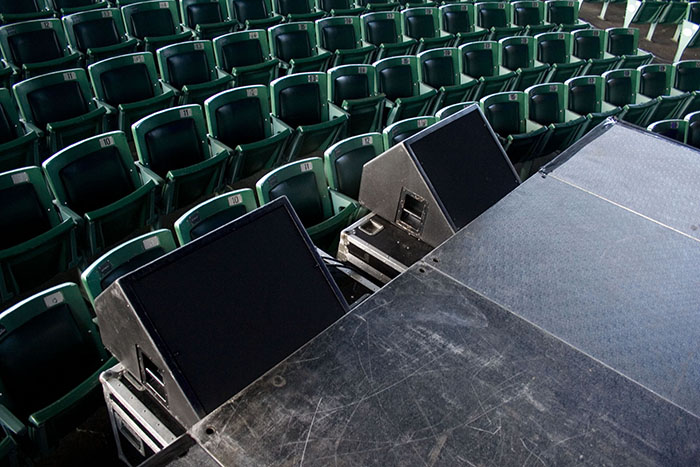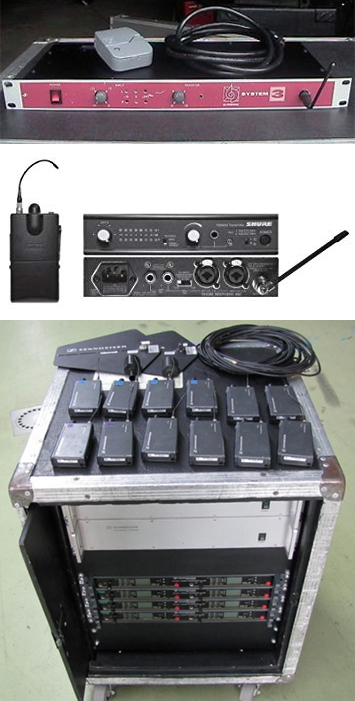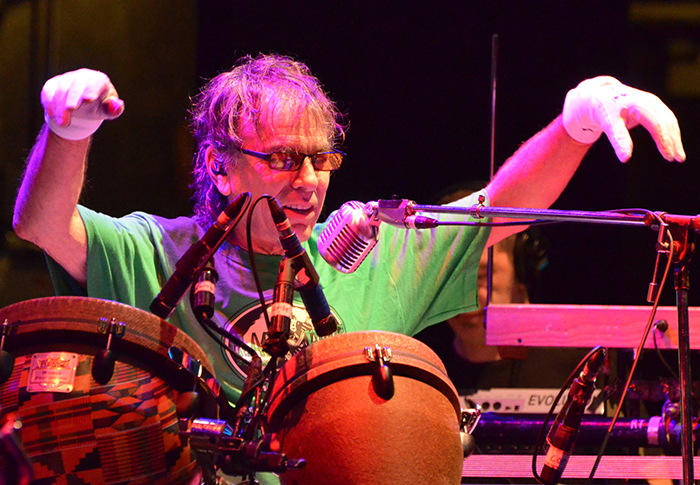
Of course, earpieces are only half of the IEM story, and the wireless technology used to supply the mixes has moved on greatly since the late 1980s. Although very expensive at the time, Garwood systems were being used by several top bands by 1992.
Widespread IEM use really boomed in the late 1990s. Shure debuted the PSM 600 Series offering a choice of two operating frequencies per system. Shortly after the millennium, Sennheiser brought out its first system, the early 3000 Series, also offering a limited choice of frequencies.

Over the next decade, multiple frequency options made the life of monitor engineers considerably easier when it came to finding clear channels; and by the late 2000s, manufacturers were able to stabilize wireless IEM reception by making the packs into true diversity receivers (previously impossible without making the pack too bulky) by cleverly utilizing the headphone cable itself as a second antenna.
Challenges Continue
Unfortunately, at the same time as the number of radio frequencies required for a complex show grew well into double figures, governments began selling off those same frequencies in bulk to mobile phone companies for their new technology, and we entered a difficult age of struggling for spectrum space.
Manufacturers started to experiment with digital transmission around 2010, which allows many more frequencies to be transmitted within a band without interfering with each other. This had its own problems in the early days, such as latency, because it only takes a few milliseconds of delay between what a performer sings or plays and what they hear to completely throw them.

Singers are particularly susceptible to this problem as they not only hear their voices but feel it through the bone conduction of their skulls. It can be subtle enough that they don’t actually perceive it as a delay, but something will feel “off.” and as few as 5 milliseconds can become a problem.
But as technology became ever more sophisticated, the analog-to-digital conversion times dropped and digital wireless became practical options that we see widespread use today with systems such as the Sennheiser 9000 and Shure Axient.
Today performers can enjoy a quality of onstage sound that was unimaginable to the artists of the 1960s. So what’s next? As technology becomes ever more innovative, where does monitor sound go from here? In my next article, I’ll explore the future of monitors.
All information presented here is correct to the best of the author’s research; however, there are gray areas surrounding the first innovators of new technologies, and several different engineers seemed to be coming to similar conclusions at similar times. If anyone has been left out of the article or has a different recollection of events, please accept the author’s apology.
